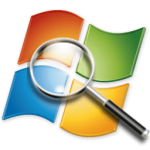
Process Explorer Download
Process Explorer is a powerful tool for analyzing active processes, improving system security, and troubleshooting performance issues.
Software details
Software Description
Process Explorer is a windows system tool which displays the detailed information about running processes. Microsoft has it in the Sysinternals Suite. It is used by many users and IT professionals to locate problems, monitor resource utilization, and detect background software.
The Features
Process Explorer allows its users to have a clear picture of what is going on in their computer. It displays every process, its CPU and memory consumption, and associated files or services. The tool allows individuals to know which applications consume the most resources and detect suspicious activity. Its key features are:
- Displays all running processes with their information
- Shows CPU, GPU and memory consumption per process
- Allows users to view what files or DLLs are open by a process
- Highlights services associated with every running task
- Enables one to pause, resume or suspend processes
- Has a search utility to determine which program uses a file
- Provides parent and child process tree view
- Endorses color coded indicators to easily monitor
- Keeps a record of CPU and GPU activity
- Enables users to make dumps to troubleshoot
- Incorporates with VirusTotal to scan suspicious processes
- Is a portable tool that does not require full installation
- Is updated regularly via the Sysinternals Suite
- Windows 7, 8, 10, and 11 compatible
No Installation is needed to use it.
Process Explorer is a portable program. It is downloadable, unzip-able and openable without installation. The program is immediate and does not modify system files. It can be loaded on a USB drive so that the user can check several computers without leaving anything behind.
Advanced Checks with Easier Than Task Manager
Whereas Windows Task Manager displays only simple information, Process Explorer provides more information and control. Users are able to trace what files or network connections each process uses. The layout assists you in viewing connections between programs and services. The tool will bring to your attention resource-intensive or unfamiliar processes even when you are not an expert so that you can manage them in a short time.
Constructed to Monitor, Troubleshoot and Secure
Process Explorer assists users in locating issues and enhancing stability of the system. It is able to find unseen or undesired software and allows you to halt it securely. It is used by IT teams to troubleshoot slow systems and monitor malware. Need to know what processes are running on your computer, and what they are doing? Want to clean up your startup, or kill off a program that is not responding? With Process Explorer, you can do all this, and more!